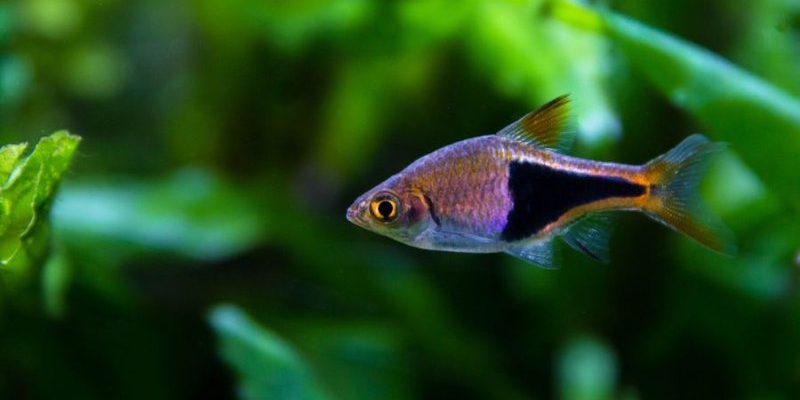
Rasboras, particularly the popular Harlequin Rasbora, are known for their friendly nature and ability to integrate well into community tanks. But here’s the thing—while these fish can bring joy to your aquarium, their longevity can vary based on several factors. Let me explain the ins and outs of rasbora lifespan, particularly focusing on those kept in captivity.
Rasbora Lifespan Overview
Typically, rasboras live between 5 to 7 years in captivity. This lifespan might seem short compared to some fish, but with proper care, they can even live longer. Imagine having a small friend for several years, sharing your aquarium adventures!
Factors like water quality, diet, and tank conditions play a significant role in how long these little swimmers can stick around. If you want to maximize their lifespan, it’s all about providing a healthy environment. Poor water conditions or an inadequate diet can shorten their lives dramatically.
Factors Affecting Lifespan
To really understand how to keep your rasboras happy and healthy, it’s crucial to know the factors that influence their lifespan. Here are the main ones:
- Water Quality: Good water conditions are vital. High ammonia, nitrites, or nitrates can lead to stress and health issues.
- Diet: A balanced diet is essential. Feeding them high-quality flakes or pellets, along with occasional treats like daphnia or bloodworms, is ideal.
- Tank Size: A spacious aquarium (at least 10 gallons) with plenty of swimming room can prevent stress and aggression. Crowded tanks lead to competition for resources, which can reduce life expectancy.
- Companionship: Rasboras are social creatures. Keeping them in a small school (at least 6) helps them feel secure and reduces stress.
Here’s why this matters: Good water quality and proper nutrition not only keep your rasboras healthy but also enhance their natural beauty. Think of it like a good diet for us—when we eat well, we feel better and can live longer!
Common Health Issues
Despite your best efforts, rasboras can still face health issues that might cut their lives short. Here are some common ones to watch for:
- Ich (White Spot Disease): This common parasite appears as white spots on the body and fins. It can be treated with temperature adjustments and medications.
- Fin Rot: Caused by poor water quality or injury, fin rot can lead to frayed fins and should be treated promptly with antibiotics.
- Swim Bladder Disorder: This can affect a fish’s buoyancy. Symptoms include floating at the surface or sinking to the bottom. A balanced diet can help prevent this.
You might be wondering how to spot these issues before they escalate. Regularly observing your fish and performing routine water tests can help catch problems early. Trust me, early intervention can make all the difference!
Creating the Ideal Environment
To help your rasboras reach their maximum lifespan, creating the right environment is key. Here’s how to do it:
1. Tank Size and Setup: Start with at least a 10-gallon tank. Use plants, rocks, and other decorations to create hiding spots. Rasboras love to explore their space.
2. Water Conditions: Keep the water clean with a good filtration system. Regularly test for pH (around 6.0-7.0), ammonia, and nitrite levels. A weekly water change of 10-20% can help maintain quality.
3. Feeding: Offer a varied diet. High-quality flakes should be complemented with occasional freeze-dried or live foods to keep them excited about mealtime.
4. Tank Mates: Choose tank mates wisely. Peaceful fish like tetras or guppies make great companions for rasboras, as aggressive fish can stress them out.
By setting up a welcoming environment, you’ll not only enhance their lifespan but also create a lively and colorful aquarium that you’ll love to watch!
Signs of Aging in Rasboras
As your rasboras age, you may notice some changes in them. Here are a few signs that your fish might be getting older:
- Decreased Activity: Older rasboras may not swim around as much as they used to.
- Color Fading: A loss of vibrancy in color can indicate aging or health issues.
- Changes in Appetite: If they start eating less or refuse food, it could be a sign of aging or illness.
Recognizing these signs can help you provide better care. Sometimes, simply adjusting their diet or tank conditions can help them feel more lively again.
Comparing Lifespan: Rasbora vs. Other Popular Aquarium Fish
While rasboras are lovely, it’s interesting to compare their lifespan to other popular aquarium fish. Here’s a quick look:
| Fish Species | Lifespan |
|---|---|
| Rasbora (Harlequin) | 5-7 years |
| Betta | 3-5 years |
| Neon Tetra | 5-10 years |
| Guppy | 2-3 years |
As you can see, rasboras tend to have a decent lifespan compared to some other popular choices. This is yet another reason to consider them for your aquarium; they give you multiple years of enjoyment!
Final Thoughts on Rasbora Lifespan
Caring for rasboras can be incredibly rewarding. As you think about how long do rasbora live, keep in mind that their lifespan heavily depends on the care you provide. Focus on creating a healthy environment, maintaining water quality, and offering a varied diet, and you’ll maximize their chances of living a long, fulfilling life.
So, if you’re thinking about bringing these little fish into your home, you’re in for a colorful journey. Just remember, with the right care and attention, your rasboras can be delightful companions for years to come!

